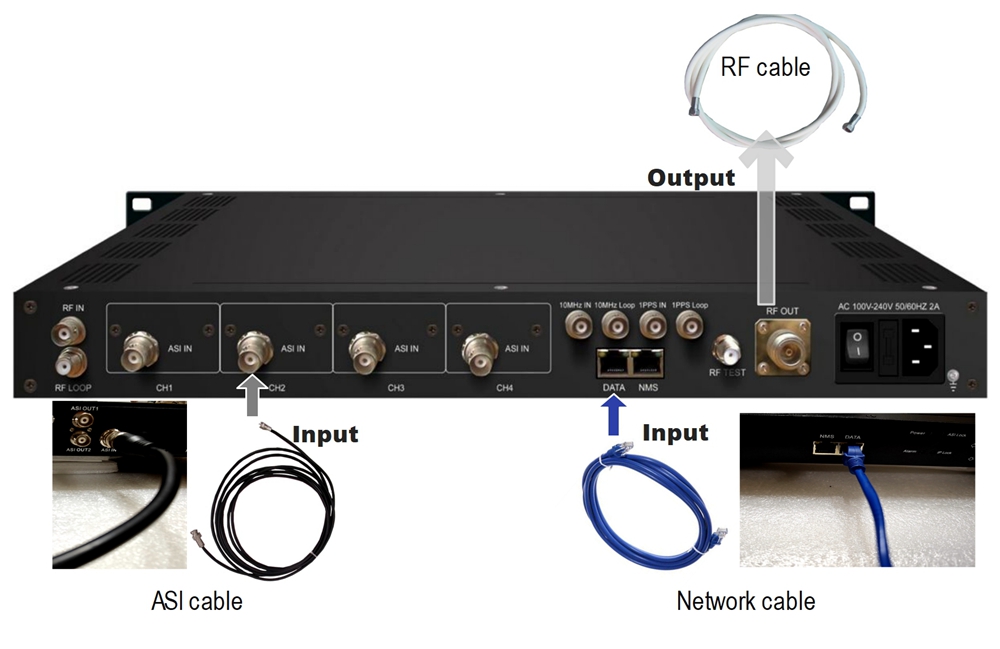
What is Digital Modulator?
1. What is a digital modulator?
1.1 What does a digital modulator do?
2. How do Digital Modulators differ from other modulations?
2.4. What is a household modulator used for?
2.5 What does a digital modulator do?
3.1 What types of Modulation Standards are in the World?
3.2 Modulation Standards for Each Country and Area
4 How to choose a broadcast modulator? Which is a better professional modulator?
5 How to use a digital modulator?
5.1 Read the user manual first
5.2. How to connect the modulator?
The digital modulator is one of the professional broadcast front-end equipment. It receives TS stream through ASI /IP interface, outputs RF signal through professional modulation processing, and distributes it to terminal set-top box /smart TV through coaxial line; or connects to DVB - T/T2 transmitter, which transmits the signal to the terminal TV receiver within the coverage area through the terrestrial wireless transmission system.
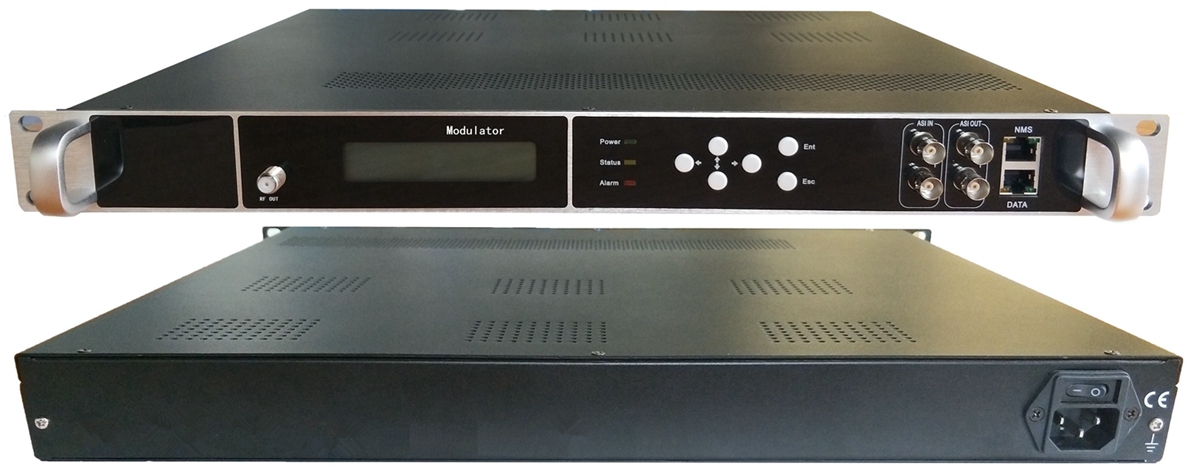
Modulator the main function is used for receiving TS stream(via IP or ASI cable) and output RF.


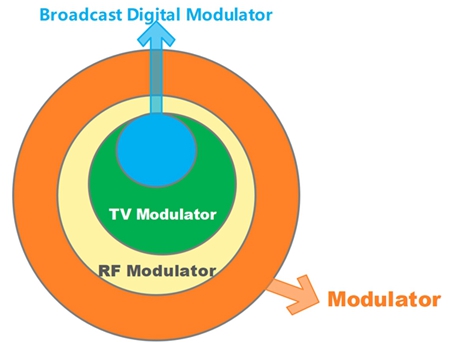
A modulator is a device or circuit that performs modulation. A demodulator (sometimes detector) is a circuit that performs demodulation, the inverse of modulation. A modem (from modulator–demodulator), used in bidirectional communication, can perform both operations. The lower frequency band occupied by the modulation signal is called the baseband, while the higher frequency band occupied by the modulated carrier is called the passband.https://en.wikipedia.org/wiki/Modulation
An RF modulator (or radio frequency modulator) is an electronic device whose input is a baseband signal that is used to modulate a radio frequency source.
RF modulators are used to convert signals from devices such as media players, VCRs, and game consoles to a format that can be handled by a device designed to receive a modulated RF input, such as a radio or television receiver.https://en.wikipedia.org/wiki/RF_modulator
We can call one of the modulators, which are used for receiving AV or TS stream, and outputting RF signal to TV/STB is a TV modulator.
Among them, the device that receives analog audio and video signals and outputs analog RF are analog modulators.
Receive digital TS stream (including from ASI/IP interface) and output RF to the digital TV system, which we call digital modulators.
What is a household modulator used for?
Usually, if we need to add one channel(which is your custom channel or real-time monitoring video) to exist distribution network, we use it.

Where is Digital Modulator used?
As professional broadcast modulators, they are used for Cable TV systems, terrestrial digital television DVB-T/T2 systems, and satellite TV systems.
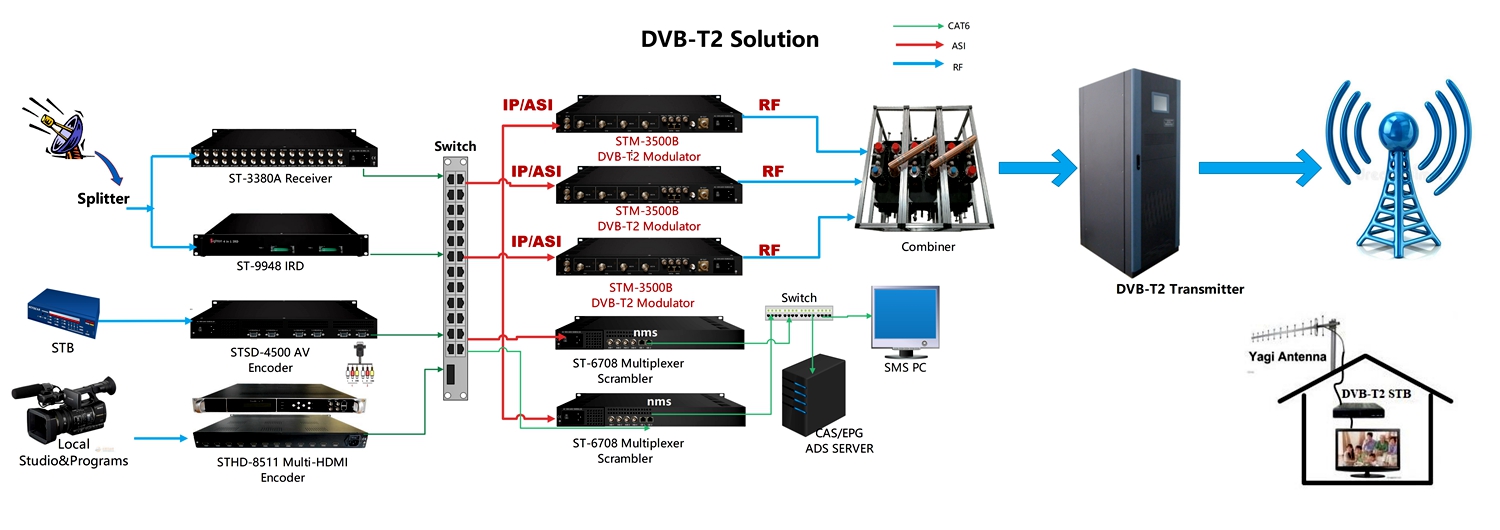
There are 4 types of digital TV standards: DVB (European standard), ATSC (American standard), ISDB (Japanese standard), and DTMB (national standard).
DVB is divided into QAM (DVB-C), DVB-T, DVB-T2, DVB-S/S2,
ATSC is divided into ASTC-C and ATSC-T.
Different countries have their own different standards. For detailed standards and country distribution, please refer to the pictures and links below:
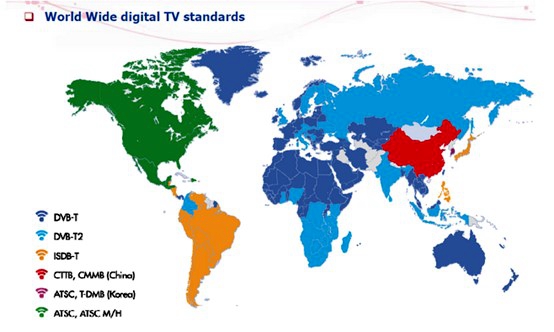
the main parameters include: modulation standard, bandwidth, RF range, and the max output bitrate(depend on how many channels can distribute)
Which is a better professional modulator? Only the right, suitable one is the best.
For details, please refer to the link: Modulator main parameters and relationship
A long warranty is better, like more than 3 years
Provides installation guidance and technical support
Because the modulator needs to be connected to front-end equipment and servers, it will involve the matching of many corresponding parameters and also need to detect signal sources.
Timely technical support is very important
Take the QAM modulator as an example:
 Download the User Manual of STPM-32
Download the User Manual of STPM-32
Use ASI cable to connect the ASI input interface or network cable to connect the Data port as input, and RF cable output
